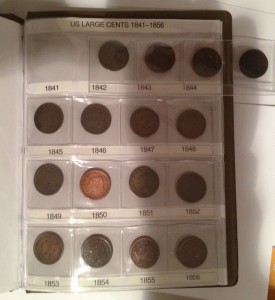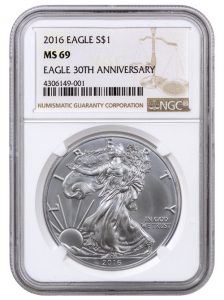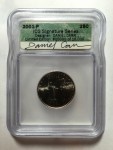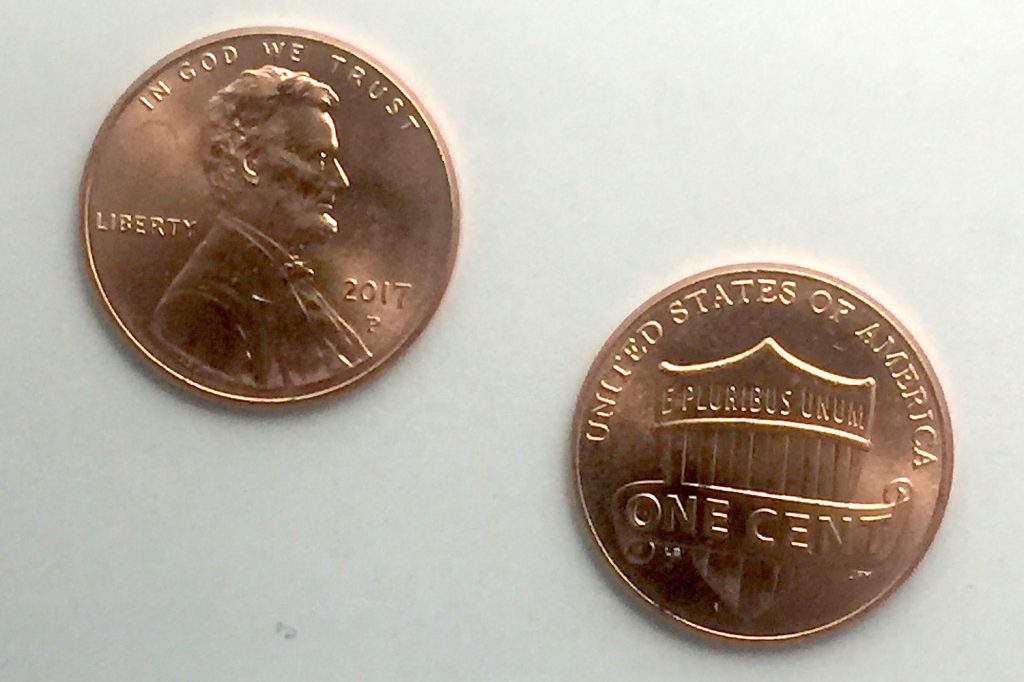ANA Elections Are Here
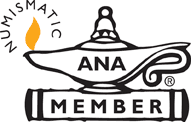 Welcome to the election season for the American Numismatic Association. It is the first election after the pandemic. As the ANA recovers from the pandemic with the rest of the United States, the ANA must elect the right people to rebuild the association.
Welcome to the election season for the American Numismatic Association. It is the first election after the pandemic. As the ANA recovers from the pandemic with the rest of the United States, the ANA must elect the right people to rebuild the association.
The ANA leads leadership to revive the association so that it matches the interest in the market. The current Board appears to lack vision and is led by someone incapable of getting out of his ideological way. It is easy to maintain an ideology when times are good, but an effective leader knows when to adjust when difficulties arise.
The definition of insanity is doing the same things over and over again, expecting different results.
Unfortunately, there are members of the current ANA Board of Governors that need to learn this lesson.
Primary to the election is the vote for president. For this election, I am endorsing Don Kagin. With no offense intended to Ron Ross, the ANA needs a president that has the experience to navigate the association through the post-pandemic environment. Ron Ross has the right idea for expanding numismatic education. It is that the ANA is in a place that it needs more. The ANA needs a president with a strong business background to lead the ANA forward.
If Ross is not elected, I hope that Kagin will find a way to keep Ross involved with the ANA’s education initiatives.
Joe Boling is the only candidate for Vice President. If Boling ran for the Board of Governors, I would endorse his candidacy. Boling has to be a member of the Board if for nothing else to restore the exhibit committee. Many people vehemently disagree with Steve Ellsworth’s mishandling of the exhibit committee and his alleged plans. As the former chair of the Exhibits Committee, Boling is the right person to fix this situation.
As for the Board of Governors, I am endorsing the following candidates:
- Muriel Eymery
- Mark Lighterman
- Clifford Mishler
- Charles Morgan
- Rob Oberth
- Shanna Schmidt
First, I am endorsing everyone running for the Board of Governors who is younger than me. It is time for the ANA to transform, and I believe that those younger have the ideas. I added Cliff Mishler to the list because he favors change with the intelligence to be a moderating voice.
I will not endorse anyone who wants to repeat the past mistakes to move the ANA forward, which is why I am not endorsing Mike Ellis and Mary Lynn Garrett.
I discussed the issues I have with Ellis in the past. I will never endorse someone who was forced to resign from the Board because of his actions.
Garrett lost my endorsement during the candidate’s forum when she did not embrace the new environment for improving ANA. Garrett wants to turn to traditional fundraising methods to grow revenues and did not indicate that she was in favor of expanding the ANA’s reach using new technologies during the forum. Garrett may have a different view after reflecting on her answers, but in a critical moment the Board needs people who can think beyond whatever they perceive as what worked in the past.
Although I only voted for four of the above list, the ANA Board of Governors will consist of seven members. If you want to vote for seven, I would recommend Garrett over Ellis.
Now it is your turn. Remember, the independent auditing firm has to receive the election ballots no later than July 1. VOTE!
Numismatics is not a dying hobby but…
- Politics: In the last 20-years, the American Numismatic Association and many of the regional organizations and clubs have be overcome by politics. If you are not with the “in crowd” you are welcome to come to the meetings but do not expect the same treatment as those within the inner circle.
- Acceptance: A progressions from politics, if you are not the same demographic of the inner circle, usually white male over 50, you have no chance of being admitted into the inner circle.
- Elitism: You do not collect something cool like Bust Dollars or Morgan VAMs? What is this, transportation tokens? Gaming Tokens? That is not cool and you cannot be in our club.
We live in a politically charged society where opinions are magnified into binary choices: yes or no, up or down, for or against, etc. There are no shades of gray and common sense is not as common as we would like to think. Things are so bad that it is reported that a woman filed for divorce after 22-years of marriage because her husband voted for Donald Trump!
While I am be guilty of adding politics to the hobby, I believe I have worked in the hobby’s best interest. During my tenure as president of the Maryland State Numismatic Association I told the board that we look too much like an insular club and need to branch out. My final President’s Letter published in the Maryland Numismatist spoke of this.
If your club’s board has consisted of the same people for more than a few years, it is time for you to step down and let someone else take the position. While it may be fun to be the king of the club, adding new people is not only good for the hobby but it will allow newer members a chance to participate. If you are not working to turn over your leadership every few years, then you are helping to destroy your organization through stagnation.
In order to have a lineup of people ready to take over leadership of the club or organization, we have to get more inclusive. This is one of the aspects of the hobby that has bothered me for a long time. If you go to many club meetings, shows, and even ANA conventions, you look out over the crowd and see an overwhelming number of white males over the age of 50. As a white male over the age of 50, I can say there is nothing wrong with that demographic. But it is not the demographic that will sustain the hobby.
Over the years there has been an effort to bring more women into the hobby. Since half of the population consists of women, that is a good start. However, the few women I see roaming the bourse floors are either middle-aged and white or accompanying their children. And given my previous discussions about bad customer service, it is no wonder women stay way from the hobby.And someone please tell the Girl Scouts that the conditions surrounding the failure of the Girl Scouts commemorative still exist. On many occasions, the Girl Scouts have been accused of being insular and parochial in their attitudes. Maybe, if they step away from their cookie boxes they will better help the girls expand beyond the attitudes these leaders think are keeping women back.
Another problem I have seen in numismatics is the lack of ethnic diversity. Where are the people of color? We work with the Young Numismatist programs through schools and the Scouts appear to reach youngsters of all ethnicities. Why does this stop after the age of 18? Why is there no outreach to non-white adults?
You cannot tell me there are no non-white adults who collect numismatics. One place I have seen a nice mix of ethnicities has been at the FUN shows. And the argument that Florida is more ethnically diverse than someplace like the Chicagoland area where the World’s Fair of Money has been held for too long is not a good argument.
Maybe it is because of the stuck up nature of the hobby. Why does everyone have to create a set that fits nicely into a blue, brown, or green album? Why does everyone have to buy plastic holders with numbers as close to 70 as possible? Why are most of the emphasis and programs surrounding numismatics have to be about coins or currency?We pay lip-service to numismatics being an all inclusive hobby but the mid-to-lower collector can be made to feel unwelcome. Dealers who are older may have a difficult time relating to younger and, frankly, a non-white demographic. It has created a culture where if you are not white, male, and collecting the thousands of Morgan dollars that are on the bourse floor or the more expensive stuff in the cases, you are a nuisance.
Although there are dealers who do cater to the average collector, the rest treat the books, boxes, and junk bins as a necessary evil. And even if you are a white male over the age of 50 but enjoy searching the junk boxes for that odd item or the rows of tokens for something from your hometown you have never seen before, you are just not the type of person the dealer wants to work with. While this is not true of every dealer, I have experienced a lot of dirty looks while carefully searching through red boxes of tokens and other items in 2×2 holders looking for that cool item from Brooklyn and New York City.
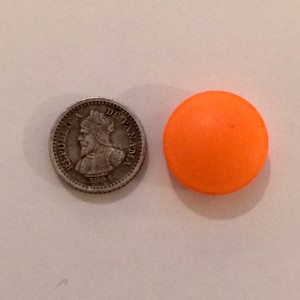
My 1902 Panama 2½ Centesimos on the left known as the “Panama Pill.” On the right is a national brand coated aspirin. I still own the coin because I think it is interesting.
Now that we have identified the problem, how do you we fix it? How do we get the YNs to continue to collect into their 20s and 30s? How do we recruit women and people of color into the hobby? How can we teach the dealers that can barely spell customer service that they need to change their ways or there will be nobody to buy their coins because they chased all their potential customers away? I am open to suggestions!
A little rebellion now and then is a good thing
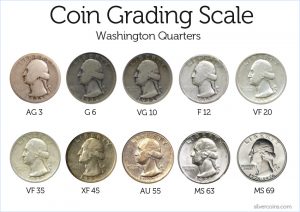 There’s a revolution brewing in the numismatics markets that is being fed by its own successes causing its own failures.
There’s a revolution brewing in the numismatics markets that is being fed by its own successes causing its own failures.
The first salvo was fired by the Professional Numismatic Guild and Industry Council for Tangible Assets in 2006 when they jointly performed their own survey. One of the results was that PNG and ICTA were sued by a few of the services whose services were deemed unacceptable.
Following the report, the services not named Numismatic Guarantee Corporation and Professional Coin Grading Service went into turmoil. PCI went out of business around the time the J.T. Stanton left the company. James Taylor bought ANACS from Anderson Press and move the company to Englewood, Colorado. Taylor raided graders from Independent Coin Grading Company. As a result, ICG moved to Tampa, Florida.
In the meantime, most of those companies rated “Unacceptable” in the PNG-ICTA report either went out of business or have been marginalized to the point of irrelevance.
Next was the creation of the Certified Acceptance Corporation as a grader of the graders. As I have explained in the past, although a fourth-party or validation service might be helpful, the CAC is not an independent organization providing the service. The company trades on its inside information in what it calls “market-making.” This type of arbitrage activity would be illegal in the securities industry but has given a false sense of security in the numismatics world.
Now there are rumblings again and this time there are a few significant people doing the talking.
For the last six month, noted numismatist and author Q. David Bowers has written several stories for Coin World that has been both critical of the coin grading business and the complexity of the grading system. Although Bowers recognizes that there are advantages to third-party grading there has been changes and not for the better.
In other words, third-party grading and authentication is good for the hobby but the services have problems.
- 2016 American Silver Eagle graded MS-69 by NGC
- 2016 American Silver Eagle graded MS-70 by NGC
Following NGC’s change in its registry rules to no longer allow coins graded by PCGS in their sponsored registry sets, NGC Chairman Mark Salzberg publishes an analysis on what he claims is the decline in PCGS-graded coins. In his analysis, Salzberg looks at the prices realized from auction sales of certain PCGS coins over time and compares them to PCGS population reports for those coins.
Through a set of charts that resemble the supply-and-demand curves, it is unsure if the charts prove anything. If Salzberg is trying to say that PCGS is practicing grade inflation, known as gradeflation, then he could prove that with the changes in the grading for many modern coins. However, comparing the population report (supply) of a classic coin like the 1912-S Liberty Nickel, may not be valid without looking at other factors, such as the population report of lower grades declining. Also, Salzberg only uses the prices realize from auctions held by Heritage Auctions and not a survey of the industry as a whole.
Does PCGS practice gradeflation? Can we also ask does NGC practice gradeflation? And we do not know how these services fare with CAC who keeps its raw data hidden from the public while using it to increase the value of the coins it examines.
Dave Bowers provides good insight into the problems with coin grading without trying to overburden the reader with statistics even with the suggestion that dealers may overly emphasize grade differences and not the aesthetics of the coin.
Bowers is not the only one complaining about grading, last September, Rick Snow wrote an article on the CDN Publishing Blog suggesting grading be adjusted to a 15-point technical scale without the qualifying notations such as “”Full Head” or “Full Bands.”
The numismatics industry has put too much trust in these grading services without oversight. When oversight was tried by industry representative organizations, the companies that did not like the results litigated rather than fix their problems causing the attempt at oversight to be eliminated. Then a validation service appears to only turn out to be something they are using to manipulate the markets in their favor.
In numismatics as in politics, I agree with Thomas Jefferson when he said, “I hold it that a little rebellion now and then is a good thing, and as necessary in the political world as storms in the physical.” Maybe it is time to stand up and ask PCGS why their population reports are going up in higher grades? We should ask why NGC is concentrating more on gimmick holders than the coin in those holders? And are NGC’s population reports without reproach? I am sure we can find problems with their population reporting. What happened to ANACS? Did Taylor get too cozy with the television shopping networks to justify general feeling that their coins are better priced as raw? And what the heck happened to ICG?Rather than implicitly trusting these companies, collectors and investors may want to start questioning all of these companies about their practices. Otherwise, you may find that coin you paid MS-70 prices for is really not worth more than an MS-68, which was a better looking, to begin with!
PNG-ICTA 2006 Grading Service Survey
Read their 2006 press release below or on Scribd.
How money was made in Ottawa in 1920
Take the video below, for example. It is titled “How money is Made” and appears to have been made for the Royal Canadian Mint by a company called Mogull Brothers Film Library in New York.
A quick bit of Internet research shows the company was founded and run by Charles Mogull (1898-1986) in Brooklyn, New York. Mogull Brothers were one of the early content creation pioneers. They would shoot a film on various subjects, edit them into smaller features, and sell the features to companies that would use them in larger compilations. Their content would be everything from features like the one they created for the Royal Canadian Mint, news events, interviews, show promotions, etc. and footage they would buy from photographers. The little information I could find on Mogull suggests that the company ceased operation in the late 1950s.
As for the film, the architecture of the original Royal Canadian Mint in Ottawa looks like a castle. I believe I read somewhere that the Royal Canadian Mint still uses the building as storage. To see this marvelous looking structure and to visit the Mint appears to be a good excuse to visit the Canadian capital.
It is a silent film that the person who posted it to YouTube added music. Even with the music, you can see how film technology has changed. Rather than being able to overlay the wording over the image, a process called keying, printed cards are used to describe the content and spliced into the film.
At the moment the film shows the making of the dies, they show the dies of a 1920 Canadian one cent coin with the image of George V. It was under George V, shortly after his ascension to the throne, that the Parliament Act 1911 transferred a lot of governing power to the House of Commons and started the erosion of monarch’s power.
Although we are well into the industrial revolution, the mix of automation and human interaction is fascinating. For example, starting around the 8-minute mark, there is a man bouncing the coins listening for its distinctive ring that silver coins make when bounced on a hard surface. Nowadays, machines with sensors and computers check the coins for quality. Even circulating coins are rarely touched by human hands.
Finally, as a little comic relief, when the film shows the title cards, look in the lower right corner at the graphics they chose to use. The filmmaker tried to use the graphics to emphasize something about what you will see next.
Now enjoy the show:
2017-P
On April 2, 2017, the U.S. Mint will be celebrating its 225th Anniversary. It marks 225 years since the passage and signing of the Coinage Act of 1792. During the year, the U.S. Mint will be doing a number of things to celebrate including issuing the new American Liberty Gold Coin.
The U.S. Mint has also issued a 2017-P Lincoln Cent with a mintmark. It is the first and the only year the U.S. Mint will be issuing a mintmark on the one-cent coin that is already in circulation. Finding two in pocket change makes it one of my earliest new years find.
Coins struck in Philadelphia from the founding of the Mint in 1793 until 1980 did not include a mintmark. The exception was the Type 2 Jefferson nickels minted using the wartime alloy from 1942-1945. Coins struck using the silver-copper-manganese alloy feature a large mintmark above Monticello, including a “P” for Philadelphia.
In 1979, Susan B. Anthony dollars struck in Philadelphia included the “P” mintmark.
Gold, silver, and platinum coins struck for the American Eagle bullion market do not include a mintmark. Although most of these coins are struck at the Philadelphia and West Point facilities, San Francisco and Denver have produced American Eagle bullion coins also without mintmarks.
Beginning in 1980, all circulating coins struck in Philadelphia include the “P” mintmark except for the Lincoln cent until now.
A mintmark is part of the coin design that tells which mint the coins were produced. Using mintmarks to identify where coins were made began in ancient Greece. Coins that were released into circulation were required to have a “Magistrate Mark,” a distinct mark representing the magistrate in charge of producing the coin. If a coin was to have problems, whether by accident or on purpose, the government knows who the responsible party was.
The law does not require the U.S. Mint to add mintmarks to U.S. coins. It never has. However, the Coinage Act of 1965 (Pub.L. 89–81, 79 Stat. 254) eliminated the mintmark on coins for up to five years. When the U.S. Mint felt that the coinage crisis that led to this law was no longer a factor, they seized upon the “up to” language to return mintmarks to circulating coins in 1968.
The U.S. Mint did not announce that they will be issuing 2017-P cents. It came as a surprise to pocket-change hunters who just found them. When asked, the U.S. Mint confirmed that the coins will have a mintmark and that they will be issued only in 2017.
When asked whether there will be special packaging that includes the 2017-P Lincoln cent, a spokesperson for the U.S. Mint said that they were not prepared to comment on that question. Stay tuned!
January 2017 Numismatic Legislation Review
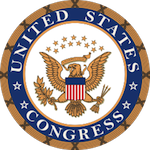 New congress means a new round of legislation. We begin the new congress with a new historical celebration commission, a commemorative bill, and what looks like a future quarter design bill.
New congress means a new round of legislation. We begin the new congress with a new historical celebration commission, a commemorative bill, and what looks like a future quarter design bill.
H.R. 66: Route 66 Centennial Commission Act
This bill can be tracked at http://bit.ly/115-HR66.
S. 579: Muhammad Ali Commemorative Coin Act
This bill can be tracked at http://bit.ly/115-HR579.
S. 166: Muhammad Ali Commemorative Coin Act
This bill can be tracked at http://bit.ly/115-S166.
H.R. 770: To require the Secretary of the Treasury to mint coins in recognition of American innovation and significant innovation and pioneering efforts of individuals or groups from each of the 50 States, the District of Columbia, and the United States territories, to promote the importance of innovation in the United States, the District of Columbia, and the United States territories, and for other purposes.
This bill can be tracked at http://bit.ly/115-HR770.


